The holidays are coming up fast, but it is not too late to make your plans for a wonderful holiday getaway. We still have some spaces left on our Christmas/New Years escorted tour to Mexico’s Copper Canyon where we will celebrate Christmas with the Tarahumara Indians at the Paraiso del Oso Lodge.
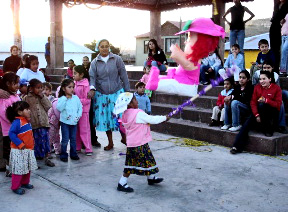
On December 23rd, we will depart with our small group out of Los Angeles and Phoenix airports for an exciting tour into the canyon. The 11-day Ultimate tour spends nights in El Fuerte, Cerocahui, Divisadero, Creel, Batopilas, Chihuahua and the “woodsy” retreat at Nortari. As with all of our Copper Canyon tours, we ride the Chihuahua al Pacifico Railroad for one of the most spectacular train rides in the Western Hemisphere.
On this special trip, participants will have the opportunity to enjoy a special Christmas Eve known as Noche-bueno (the Good Night), a delicious dinner at the Paraiso del Oso, and Ana Maria’s famous Christmas punch. Those wishing to join the Tarahumara Indians and mestizo community may attend the midnight mass, also known as La Misa del Gallo (Rooster’s Mass). Traditional Tarahumara dancing usually starts an hour or two before the mass, then recommences afterwards to make it an all-night celebration. As an old Spanish saying goes, “Esta noche es Noche-Buena, y no es noche de dormir” (Tonight is the Good Night, and it is not meant for sleeping).
As Christmas morning arrives, the celebration moves back to the Oso Lodge where local Tarahumara, who live in isolated ranchitos in the rugged mountains surrounding the lodge, join the hotel guests for the piñata party. The children take turns swinging at the Christmas piñata until it explodes, showering candy and small toys. The hotel is filled with laughter and glee as the children scramble to collect their treasures. Then gifts from under the Christmas tree are handed out. As the locals return to their mountain ranchitos, The California Native guests prepare for a beautiful day trip to the bottom of Urique Canyon. In the evening after the excursion, guests enjoy a traditional turkey dinner with all the trimmings.
In a few days, it will be time to welcome in 2011, and we’ll spend New Year’s Eve surrounded by pine trees in the Sierra Madre Mountains. We will stay in comfortable log cabins at the Lodge at Norítari. In Rarumari, the language of the Tarahumara Indians, the name means a “Place Above the Clouds.” Here we can hike to a nearby lake or relax on an old-fashioned porch taking in the peacefulness of this lovely area.
Some other highlights of this tour are the Cusarare and Basaseachic waterfalls, a day trip to the village of Urique, the “Lost Cathedral of Satevo,” a trip back in time to the village of Batopilas, and magnificent vista points which overlook a whole series of intertwined “barrancas” (canyons).
Want to celebrate Christmas in Copper Canyon but can’t take the full 11-days for your winter vacation? We also have an 8-day trip which departs on December 19.
To be a part of this year’s celebration and enjoy this truly unique experience, call us at 1-800-926-1140 (or 1-310-642-1140) to make your reservations now as time is running out. Happy holiday season to all of our fellow travelers.

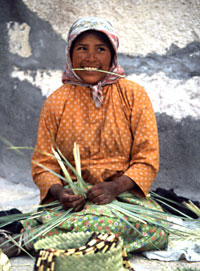
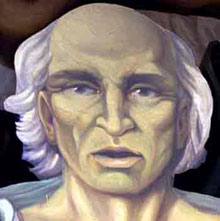
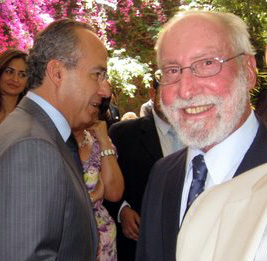 On May 21, 2010, California Native owners Lee and Ellen Klein were guests of Mexico’s President Felipe Calderón at a luncheon he held in Mexico City at Los Pinos, Mexico’s official presidential residence.
On May 21, 2010, California Native owners Lee and Ellen Klein were guests of Mexico’s President Felipe Calderón at a luncheon he held in Mexico City at Los Pinos, Mexico’s official presidential residence.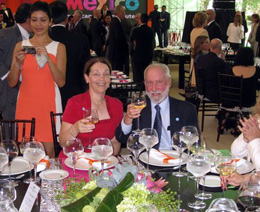
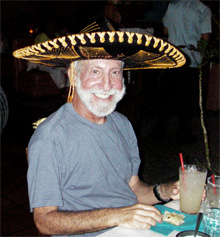 Most Americans think that Cinco de Mayo (the 5th of May) celebrates Mexican Independence Day. Not so. Mexican Independence Day is September 16. Then what is Cinco de Mayo?
Most Americans think that Cinco de Mayo (the 5th of May) celebrates Mexican Independence Day. Not so. Mexican Independence Day is September 16. Then what is Cinco de Mayo?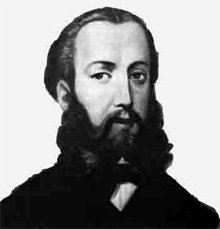 Napoleon enlisted England and Spain to join him in a mission to encourage Mexico to pay off its foreign debts. The mission began with the landing of French, English and Spanish troops at Vera Cruz. The French minister then demanded that Mexico pay 12 million pesos to France, an impossible amount, given the state of the Mexican treasury.
Napoleon enlisted England and Spain to join him in a mission to encourage Mexico to pay off its foreign debts. The mission began with the landing of French, English and Spanish troops at Vera Cruz. The French minister then demanded that Mexico pay 12 million pesos to France, an impossible amount, given the state of the Mexican treasury.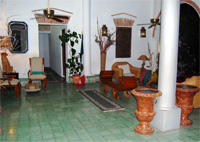 Thanks to you and
Thanks to you and 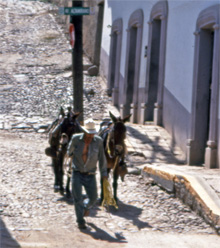 This is Batopilas, a small village located in Mexico’s Sierra Madres at the bottom of the deepest canyon in the vast complex of mountains and canyons known collectively as
This is Batopilas, a small village located in Mexico’s Sierra Madres at the bottom of the deepest canyon in the vast complex of mountains and canyons known collectively as 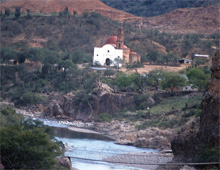 Three miles downstream from Batopilas, past an old suspension bridge, is a 400 year old Jesuit mission. The mission, recently restored, is known as the “Lost Cathedral” of Satevo, because over the course of time all records of it were lost by the Catholic Church.
Three miles downstream from Batopilas, past an old suspension bridge, is a 400 year old Jesuit mission. The mission, recently restored, is known as the “Lost Cathedral” of Satevo, because over the course of time all records of it were lost by the Catholic Church.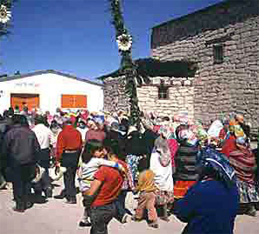 To begin to understand the Tarahumara ceremonies, one has to have a basic understanding of the Indians’ religion. The Tarahumara are outwardly Catholic, but their version of Catholicism is unlike any form we are familiar with.
To begin to understand the Tarahumara ceremonies, one has to have a basic understanding of the Indians’ religion. The Tarahumara are outwardly Catholic, but their version of Catholicism is unlike any form we are familiar with.